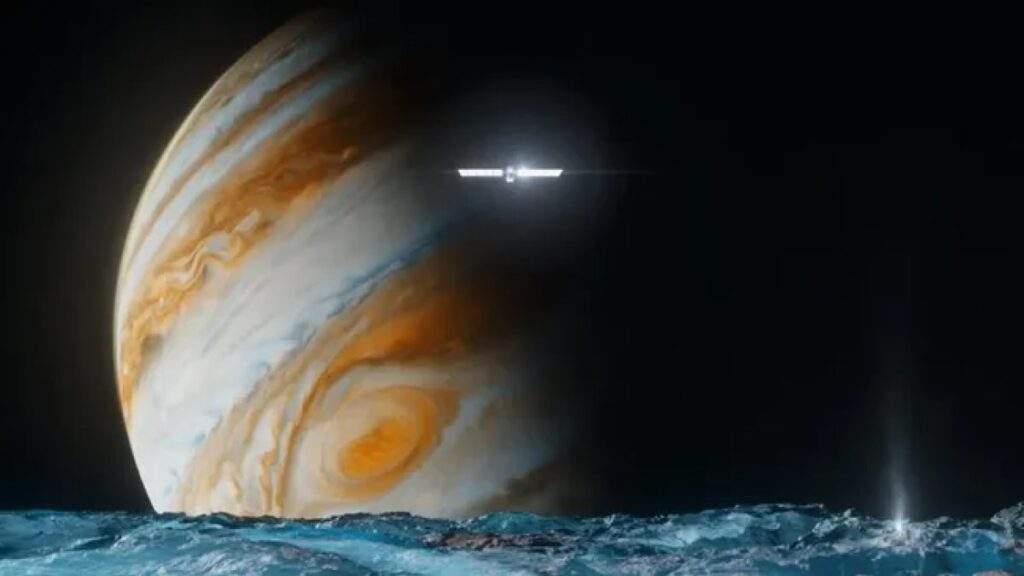NASA Embarks on Mission to Explore Jupiter’s Moon Europa, Potential for Life Beyond Earth
In the coming weeks, NASA will launch its ambitious Europa Clipper mission to Jupiter’s moon Europa, in search of potential signs of life. Despite initial delays due to Hurricane Milton, the agency’s plan remains intact, and scientists are eager to uncover the moon’s secrets.
Why is Europa a promising target in the quest for extraterrestrial life? The answer lies in its potential liquid water. Scientists believe that beneath its icy exterior, Europa harbors vast subsurface oceans, similar to those found on Saturn’s moons Titan and Enceladus. This possibility makes Europa an attractive candidate for life beyond Earth.
The Europa Clipper spacecraft, equipped with nine sophisticated instruments, will closely examine the moon’s surface, searching for signs of life beneath the thick ice sheet. Using thermal imaging, spectrometers, and cameras, the spacecraft will detect any unusual heat or chemical activity, providing valuable insights into the moon’s subsurface oceans. One of its key objectives is to locate and study potential water plumes erupting from the surface, which could reveal more about the moon’s ocean.
While it will take the spacecraft over five years to reach Jupiter’s orbit, this mission marks a significant step in exploring Europa. Although the Clipper won’t be able to confirm life itself, its findings could lead to more in-depth future missions, ultimately bringing us closer to discovering life beyond Earth.
NASA’s Europa Clipper mission has the potential to rewrite our understanding of life beyond our planet, and its launch is eagerly anticipated by scientists and space enthusiasts around the world. As we continue to explore the unknown, the search for life on Europa and other celestial bodies remains a vital quest, driven by humanity’s innate curiosity and thirst for knowledge.
